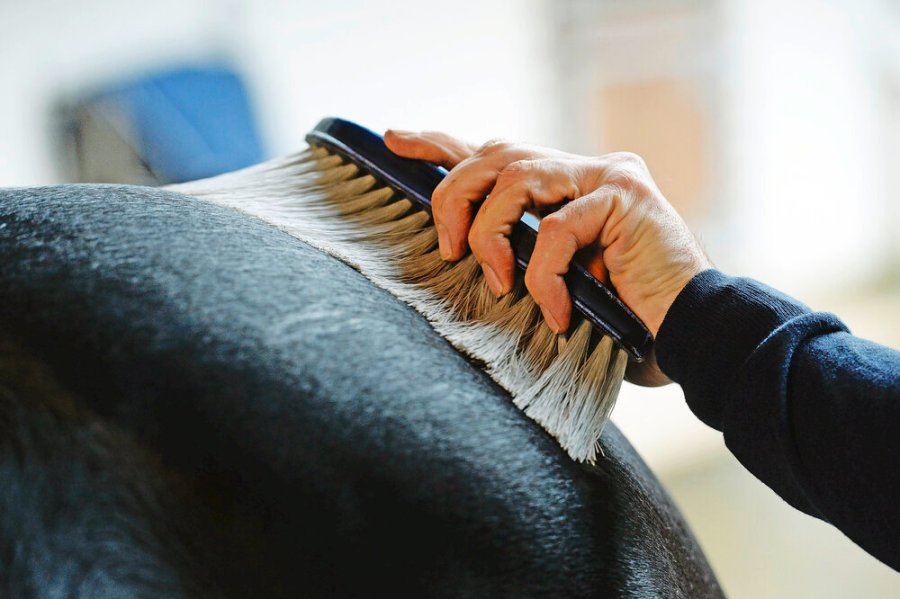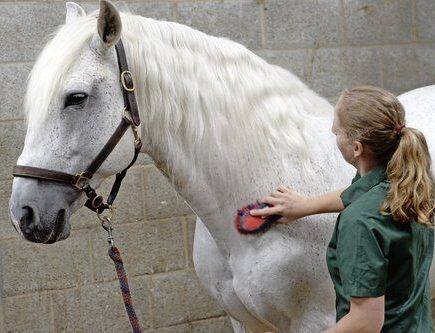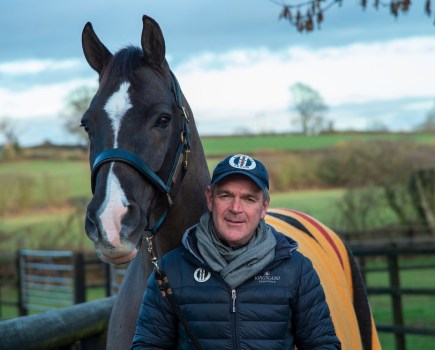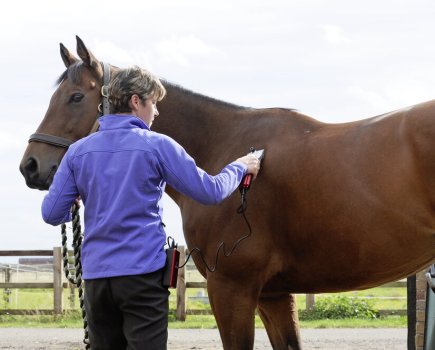Every owner and rider should make time in their busy schedule for horse grooming, because there are so many benefits for both of you. Grooming a horse doesn’t just remove dirt and get their coat to shine — it’s great for their health too — and what you have in your grooming kit will make all the difference.
A thorough horse grooming session can promote blood circulation and massage muscles, giving some relief to tired limbs and helping warm up a body that is about to work. It also helps remove dead skin cells and stimulates the production of natural oils in the horse’s coat, which play an important role in keeping them warm and in good condition.
Horse grooming gives you one-on-one time with your horse, which helps you to bond, get to know each other (if you’re a new combination) and relax as you simply enjoy each other’s company. It is also an invaluable opportunity to put your hands on your horse and look and feel for any lumps, swellings, heat or skin issues. Generally speaking, the earlier you spot and deal with this sort of thing the better.
Horse grooming: brushing a muddy horse
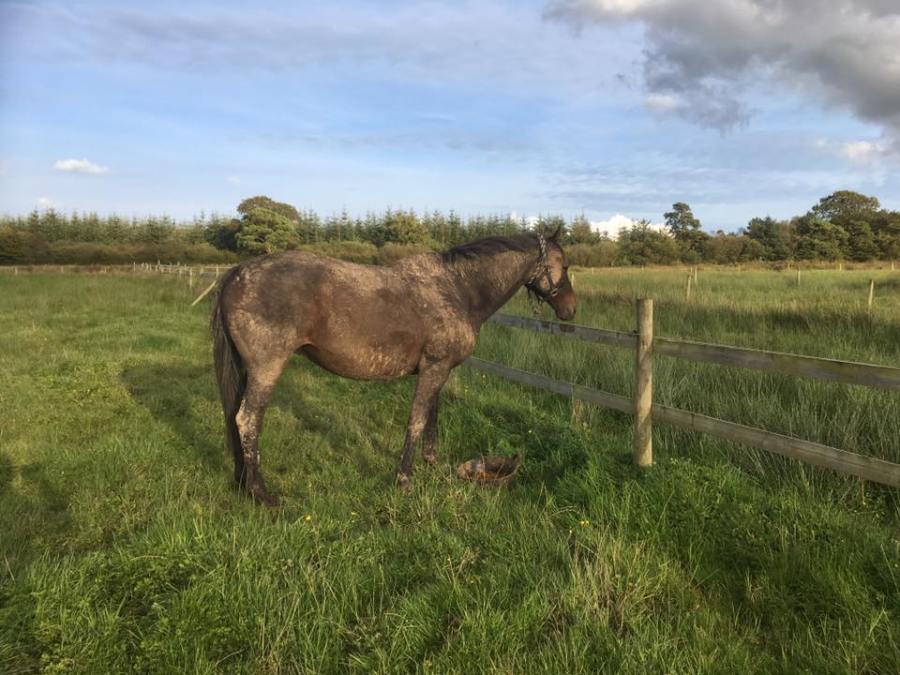
Bee had a very dusty coat with a layer of thick, dried mud
My first pony was a grey New Forest, who loved being muddy. So much so, in fact, that a friend once asked who the new “skewbald” was in my field. Err, that would be my very dirty fleabitten grey. I like to give horses time in the field without rugs on as much as possible because I know it’s good for them, but it does mean allowing for an extra-long grooming session to remove said mud before I can ride again.
Your Horse asked Jess Errington, head girl for one of Great Britain’s leading event riders, Harry Meade, for her tips to transform a mud monster into a horse who’s competition-ready when you have limited time to spend brushing. These came in very handy recently when I brought my ex-racehorse Bee in from the field and we had a hunter trial to get to… Check out the photographic evidence above!
Horse grooming step 1: clean feet and legs
“If your horse’s feet and legs are muddy, hose them and pick out their feet. Depending on how muddy they are and the temperature on the day, I’d boil a kettle so I can give them a warm, soapy rub down too,” says Jess. “It’s quicker and easier to wash muddy legs than try to brush the mud off, but don’t wash too often as it weakens the skin and could increase the chances of mud fever. Always dry a horse’s legs thoroughly when they’re wet as this will help to prevent mud fever and other skin conditions. I like to apply talcum power to white legs because it helps to dry them, as well as making them whiter.”
Horse grooming step 2: tackle a dirty tail
“Give the bottom of your horse’s tail a shampoo. Tail washing doesn’t take long – a dunk, a scrub and a good rinse does the job,” says Jess. “If you only wash the bottom of the tail, a cold-water rinse is just as good, otherwise you’ll have to wait for the kettle. Your horse isn’t going to feel the cold, only you are — although you could don rubber gloves to help.
“Having washing up liquid or white-enhancing shampoo in your kit is great for cleaning grey tails and white legs. Add beeswax polish, baby oil or conditioning spray to the tail before combing through, then snip the ends for a neat finish.”
Horse grooming step 3: body beautiful
“If your horse isn’t as muddy on their body, mane and head, a quick but thorough groom with a dandy brush will loosen the mud, then flick it away,” advises Jess. “If you’ve had to apply water to get rid of thicker mud, use a mesh or wicking rug to help them dry. Stable or grass stains can be removed with a dry shampoo, then remove any remaining dust with a body brush.
“If you haven’t got enough time to bath really grubby areas, hot-cloth them using hot (but not too hot) water with a splash of Dettol or baby oil and a well wrung-out flannel. This probably isn’t necessary to ride or hack at home, but if you’re getting ready for a competition it really helps.”
Horse step 4: final touches
If you’re preparing your horse for a competition, this last step of the process is for you:
“Once at the show, spray some coat shine over his body, avoiding where your saddle sits,” advises Jess. “A microfibre cloth can also add great shine in the absence of sprays. Give your tack a final polish, and then apply oil to your horse’s hooves and baby oil over their muzzle, knees and hocks. Now your horse will look smart enough to stand out, and nobody ever needs to know you got them ready in 30 minutes.”
Horse grooming: tail care
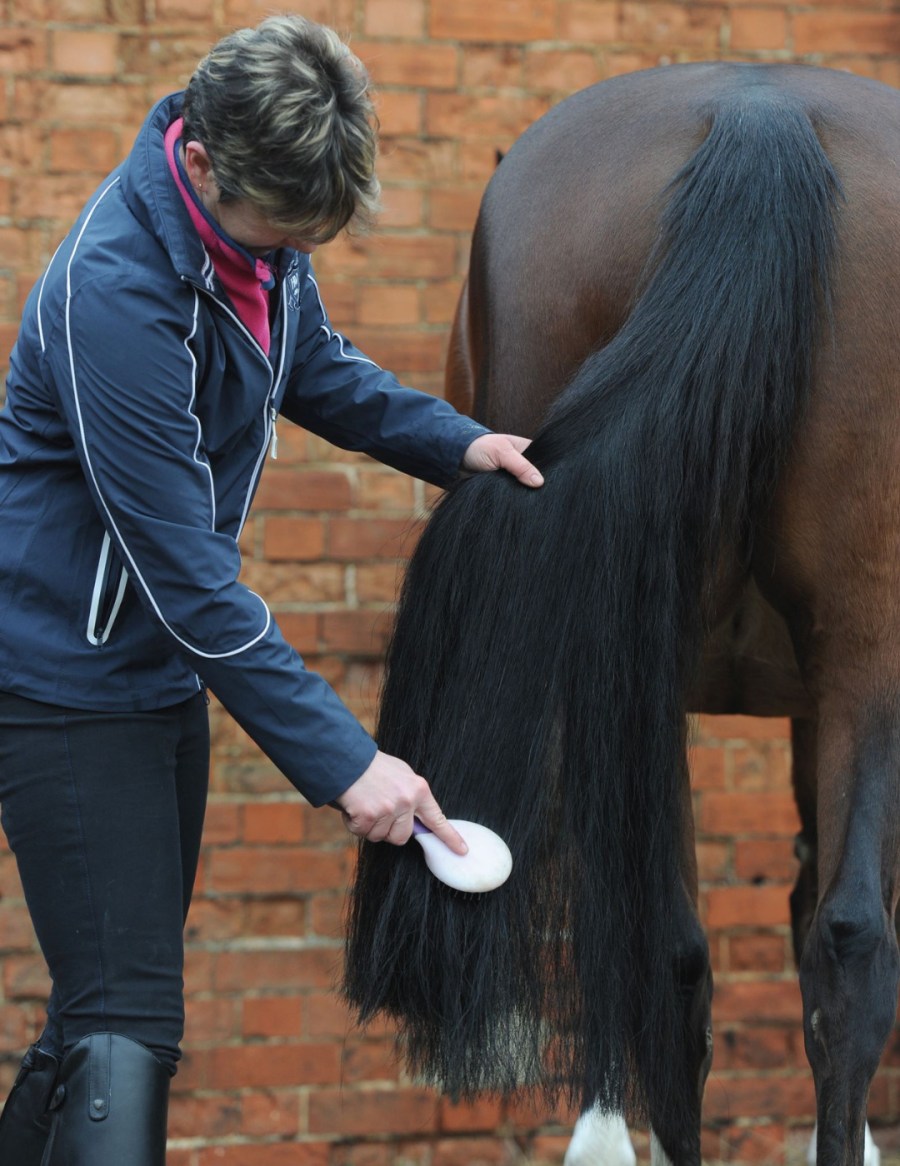
Avoid brushing tails too often
When you brush your horse’s tail, have you noticed loose hairs left in your hand afterwards? Me too — and as a life-long rider of Thoroughbreds with fine hair I do worry about the damage brushing does to their tail. I like to keep them doused with detangler as I find that less mud sticks to it and only brushing when I really need to. Jess agrees.
“I don’t believe in brushing horses’ tails every day,” she says, “as it tears out the hairs and before you know it you will have a very thin tail that will take forever to grow back and, let’s face it, it won’t look great.
“I only comb a tail through when the horse is going to a competition,” continues Jess. “That’s when I will also use a dampened plastic mane comb and, from the near (left) side, comb the mane over onto the correct, off (right) side, helping it to lie flat and straight.”
To gently comb through a tail, start with a small amount of hair at the bottom of the tail and gently work through the whole tail until it’s completely untangled.
Back to my point about using detangler on tails rather than regular brushing: I should add that I don’t use detangler on manes, because it makes them slippery. I like to be able to grab hold of a mane should I become unbalanced by some unexpected behaviour (and when you ride ex-racehorses, this can happen a lot!).
Grooming a horse to ride at home
Sometimes, there just isn’t time to give a muddy or dusty horse a really good groom before you ride. Perhaps you’re running out of daylight, you’re squeezing in some exercise in your lunch hour, you need to get home to cook dinner — I get it, life’s busy. On this occasions, I think it’s acceptable to just brush off ‘essential’ areas, and I’m not the only one who thinks this.
“I clear the areas where the tack goes so the horse is comfortable being ridden,” says Laura White, who has been a groom for over 17 years. “If they are really muddy, I use a rubber curry comb to get the mud off and then give them a good flick off with a dandy brush. I use a plastic curry comb for manes and if they look really dusty and I’m going for a hack, I might use a damp cloth to remove excess dust.”
Laura’s horses are turned out again after riding, so they soon get muddy again anyway.
“I use my hands to pick off the big clumps of mud that the brushes won’t get through, especially around their sensitive ears and eyes,” adds Laura.
Laura’s top tip for coat care is putting a summer sheet on your horse underneath their stable or turnout rug — just be mindful that this won’t make them too hot.
“The summer sheets are much easier to wash and having clean rugs on helps to keep coats in good condition and prevents horses getting greasy,” she says.
Horse grooming: top tips
- Remember that after-exercise coat care is just as important as the grooming you did before you tacked up. If your horse has sweated, use a damp sponge or cloth to wipe the sweat away. On a hot day you might be hosing your horse off after a ride. If so, make sure you brush the saddle area and around the ears while they are still wet. Dried sweat is a nightmare to get out with a brush and it could irritate your horse’s skin if left on.
- It is advisable to untie a horse while brushing their head, just in case they protest and try to run backwards. Only using a soft brush will help keep them happy.
- Pulled tails look smart and are many riders’ preference — Jess Errington keeps all her horses’ tails pulled, for example — but a lot of horses (understandably) are not keen on having it done. For horses who find tail pulling painful, having them sedated by a vet will help. Tie it in with a teeth check-up or clipping to make it cost effective. Your Horse testers have reviewed several humane thinners — find out which they rate best here.
- Always brush in the direction of hair growth in your horse’s coat. Try running your hand the wrong way through your own hair and you’ll soon understand why this is recommended.
- Don’t brush too hard around sensitive areas, such as the eyes. Take note of any areas where your horse is ticklish or unhappy about being groomed and adapt your horse grooming routine accordingly.
Horse grooming: order of brushing
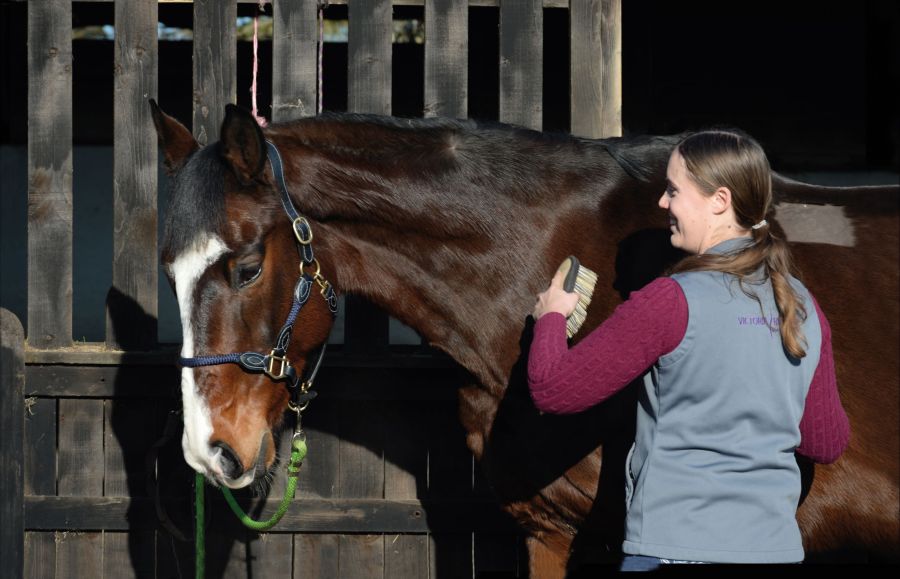
A flick brush is often used first when grooming
Professional groom Jess Errington is an expert when it comes to turning out multiple horses to look their best. Inside her grooming box you will find:
- A good flick brush (or dandy brush)
- A relatively soft body brush
- Plastic curry comb
- Tail brush
- Long plastic mane comb
- Hoof pick and hoof oil.
Other brushes are available, so add the right ones to suit you and your horse to your own grooming kit. A rubber curry comb, for example, used in circular motions on your horse’s coat effectively gives them a mini massage, helping to tone up his muscles and increase blood flow — they’ll love it! As you use the rubber curry comb to massage all over their body, you’ll start to remove the dead and loose hair, which is the first step towards a nice coat shine. Like Laura, a rubber curry comb is my first brush of choice when faced with a muddy horse. Do what works for you.
“I start a grooming session by using my flick brush all over the horse’s body, including their legs,” states Jess. “I then move on to my soft body brush and plastic curry comb used one after the other and I give the horse a thorough groom, almost like strapping — a firm action with long strokes, designed to get the blood flowing and feel a bit like a massage. This gets the horse clean, encourages circulation and helps to warm up the muscles too.”
How to hot cloth
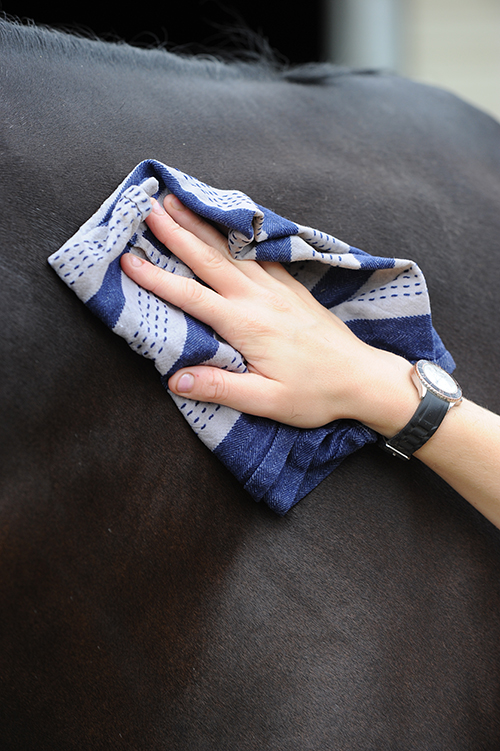
Hot clothing can help to remove dirt and grime
A body brush is great for removing dust and any dirt and loose hair from the top of your horse’s coat, as well as creating the perfect starting point for hot clothing. Hot clothing helps to lift any of the dirt or grime that brushing alone has missed.
In order to hot cloth, use an old towel soaked in water that’s as hot as you can touch with your own hand. For added shine when the coat dries, try adding a dash of baby oil to your bucket of hot water. Rub the towel all over your horse’s body to lift any lingering grease or dirt and leave the coat spotless.
Coat shine: other factors to consider
Of course, how good you are at horse grooming isn’t the only factor in coat shine. Good condition starts on the inside with correct nutrition. The biggest influence on coat condition is your horse’s overall health, so it pays to start with the basics: think about their worming programme, teeth condition and general health status. Then consider their diet.
Firstly, make sure you are feeding enough forage and secondly, make sure your horse’s diet is fully balanced. Nutrient deficiencies can affect coat condition so providing your horse with a well-balanced diet is the key to producing a healthy horse on the inside, as well as a lovely shiny coat on the outside. Nutritionist Clare Barfoot explains more about this here.
Related content
- Alan Davies’ grooming brushes range, plus the top groom’s daily grooming routine
- Horse grooming vacuum: what they are, how they work and where to buy one
- How to keep any mane looking trim, tidy and looking smart
- How to plait a horse’s tail

